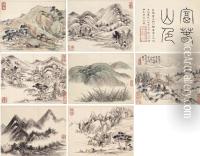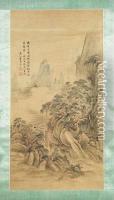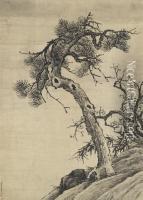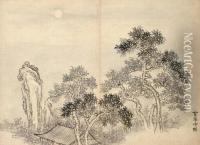Dong Bangda Paintings
Dong Bangda was a prominent Chinese painter, calligrapher, and high-ranking official during the Qing dynasty. Born in 1699 in Zhejiang Province, Dong was adept at painting, particularly in the literati style, which emphasized personal expression and scholarliness over formal techniques and realism. His artistic style was characterized by its elegance and refinement, which were highly valued in the cultural circles of his time.
In his early years, Dong Bangda was deeply influenced by the traditional Chinese scholar-official culture, which prized the arts of poetry, painting, and calligraphy as integral to a cultivated life. He pursued a career in the civil service, successfully passing the imperial examinations, which led to various governmental posts. His rise in the bureaucracy was notable, and he eventually became a high official in the Qing court. His position allowed him to interact with other scholars and artists, further enriching his artistic practice and understanding.
Throughout his career, Dong Bangda continued to produce artworks that were sought after by his contemporaries. His paintings often featured landscapes, a subject highly regarded within the literati tradition, and his calligraphy was celebrated for its fluid and vigorous style. Dong was also known for his art criticism and theory, contributing to the discourse on artistic standards and practices of his time.
As an artist, Dong Bangda is remembered for his ability to blend the traditional with the personal. While he adhered to the conventions of Chinese literati painting, he also imbued his work with a sense of individuality that made it distinctly his own. His legacy includes a body of work that reflects the values and aesthetics of the Qing literati, as well as his role in the cultural and political life of the era.
Dong Bangda's death in 1769 marked the end of a significant career that spanned both the arts and public service. Today, his works are considered important examples of Qing dynasty painting and calligraphy, and they continue to be studied and admired for their artistic merit and historical significance.





